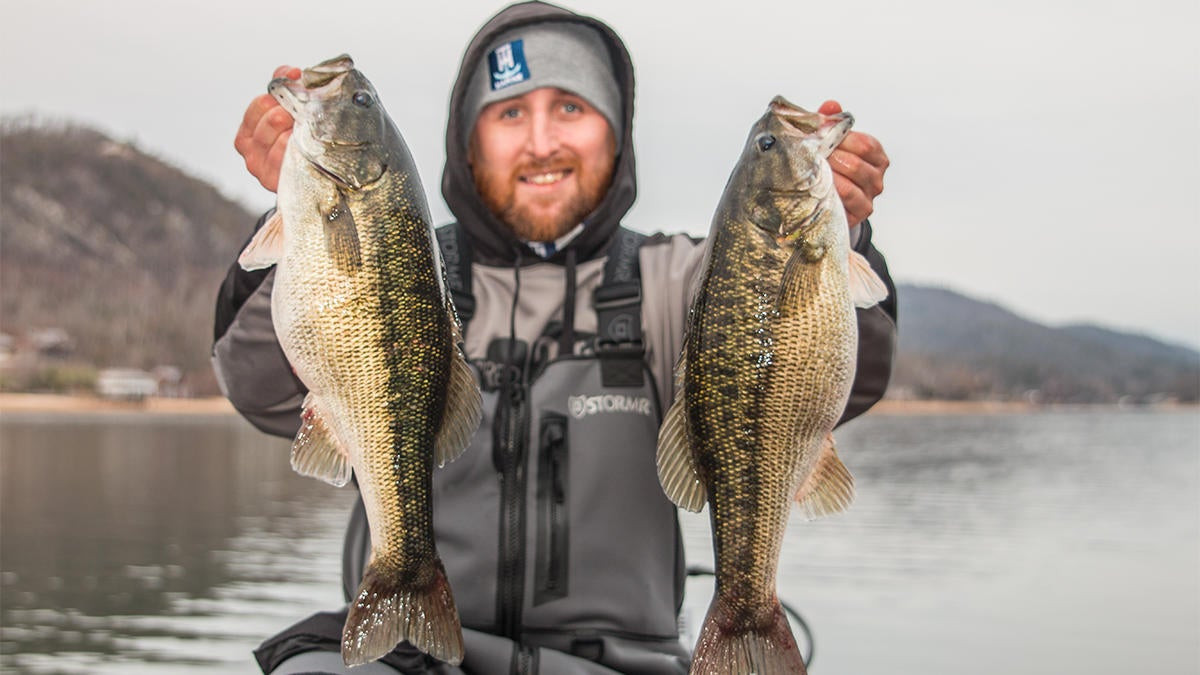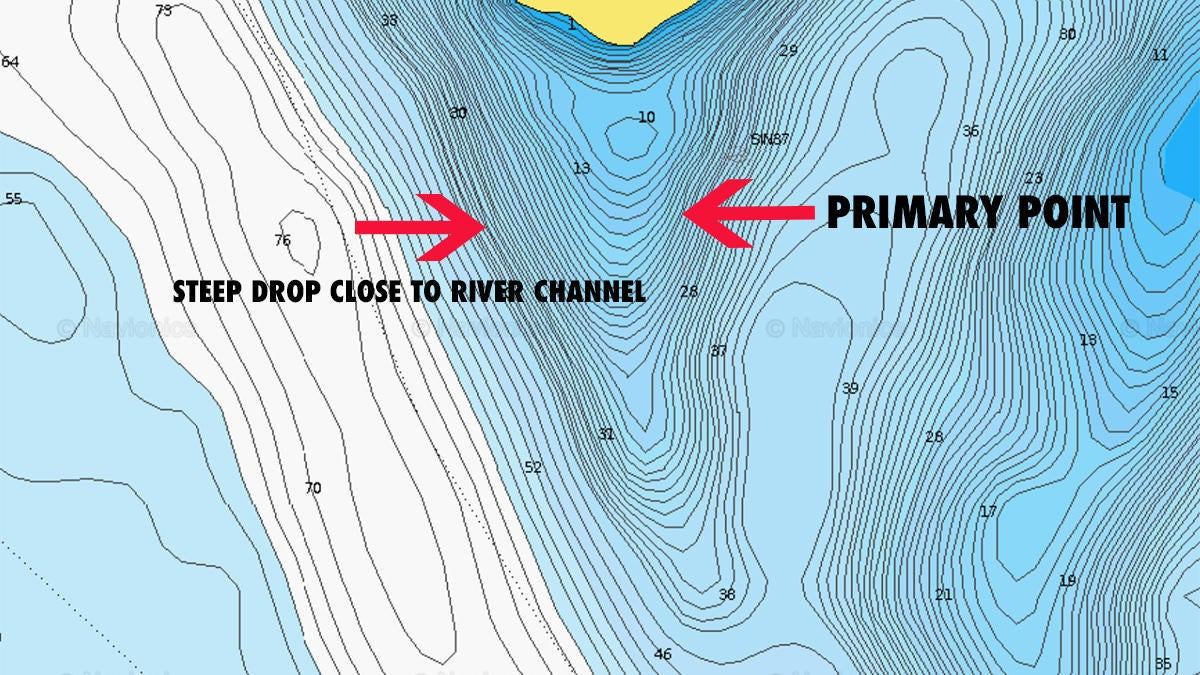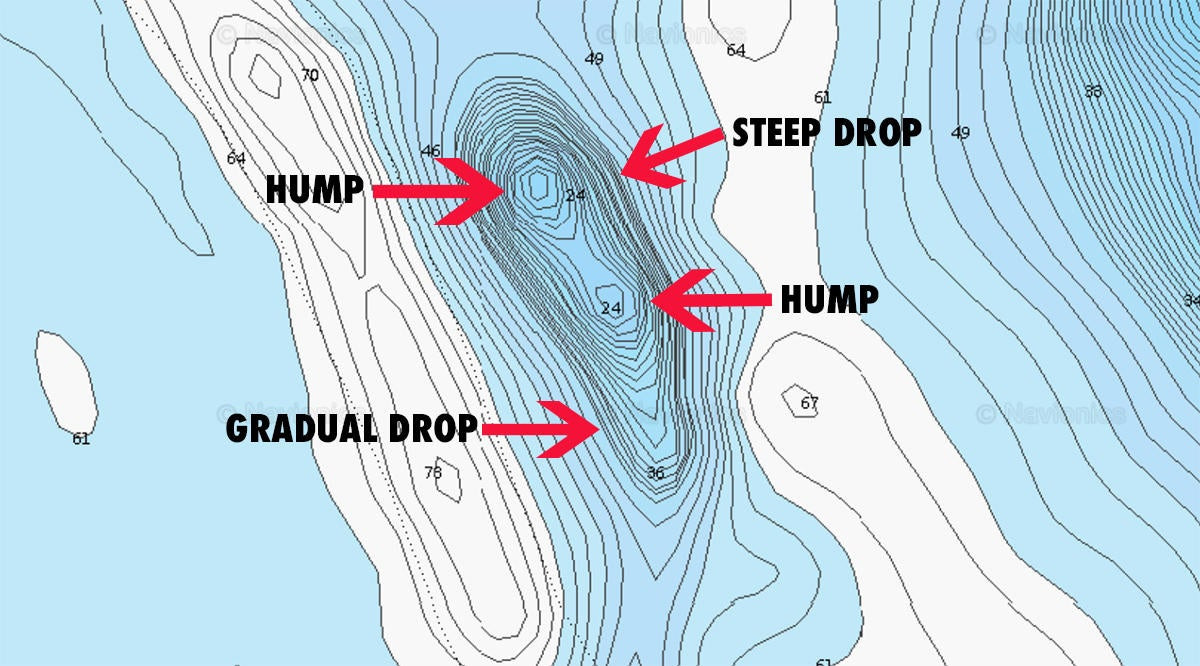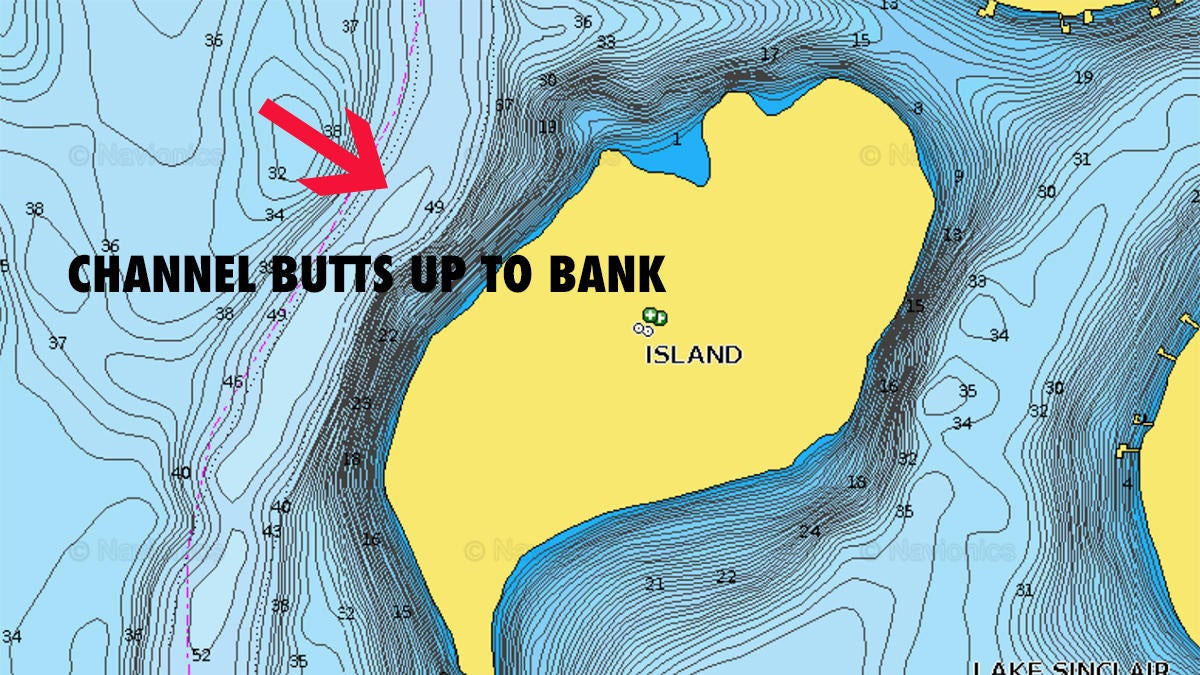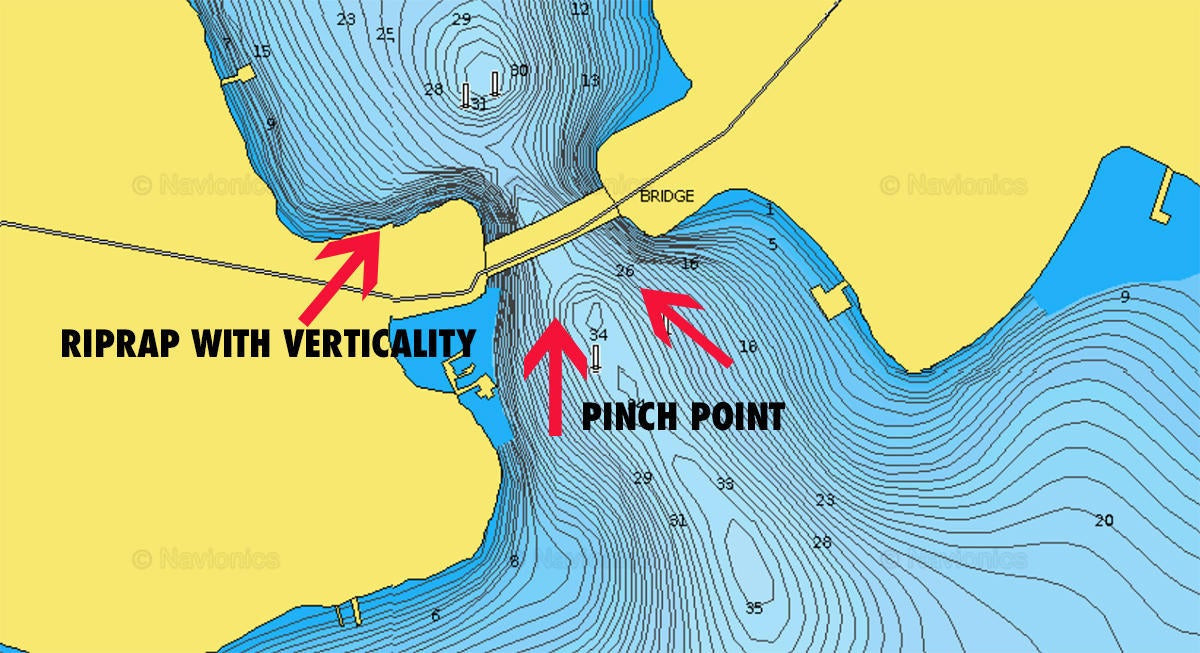This is certainly a unique time of year for bass anglers. The bucks are rutting, the ducks are migrating and the bass… well, they’re just frustrating. But before you trade in your rods for your deer stand or shotgun, hear me out. Head to your local corner store, grab a map of your favorite lake and find some of these spots we’re about to discuss.
While there are no guarantees in bass fishing—especially with these cold temperatures that will only get worse—these spots will certainly give you a leg-up on lethargic, cold-water bass.
Hotspot No. 1: Primary points near deep water
Yeah, I know. Points hold bass all year long, so what’s so special about right now? In short, the points I prefer to target this time of year almost always have a steep drop. This drop can be either on the end as it dumps out into a river channel or it can be on the side of the point. Both scenarios offer the same, very important characteristic that bass crave right now.
It’s all about verticality.
I view points as a buffet line for bass. When they’re ready to feed, they move up on top of the points and gorge themselves on baitfish. But when they’re not actively feeding, they need the perceived security of nearby deep water. Steeper drops off the sides or ends of primary points give them the very best of both worlds. They can slide back into deeper water when they’re inactive or when a big cold front rolls in and they can rush up to the top of the point to take advantage of a small feeding window.
When you’re looking at your map, you’re going to see a bunch of points most likely. Try to stay towards the main lake and look for tight contour lines on the sides or ends of these points. These contour lines indicate a sharp depth change, which should hold a few bass.
Hotspot No. 2: Offshore humps
For whatever reason, this has never been a great big-fish pattern for me throughout the colder months. But man, if you’re looking to catch numbers of 2-pound bass, there isn’t a more fun way to fish right now. These humps are also extremely easy to find on your map.
They key depth of these humps is going to change depending on your particular lake, location and water temperatures. But generally speaking, if I can find a hump that tops out in 22 to 25 feet of water, there will almost always be bass nearby. Sometimes they’re on the top and sometimes they’re just off the side of the hump. Again, this can change by the hour, so it’s important to explore the entire hump.
I graph these humps in a zigzag pattern and whenever I start marking arches, I’ll keep driving in the same direction. As soon as the arches disappear on my graph, I will throw a marker buoy behind me, which tells me where the end of the school is. Next, I’ll circle around on my big motor and situate myself down-wind or down current of the buoy. Then it’s time to catch a bunch of fish.
Blade baits such as the Original SteelShad or jigging spoons such as the War Eagle Jiggin’ Spoon fished vertically are awfully tough to beat in cold water. I like the heavier models so I can get the lure to the bass quickly. Simply drop ’em down to the fish on your graph and lift your rod tip a few inches before letting your lure drop on slack line. When you get a bite, the bass will either be there when you start to lift your rod tip again or it’ll thump it and put slack into your line as your lure falls.
Hotspot No. 3: Channel swing banks
Channel swing banks are-as you probably guessed-areas where the river or creek channel swings close to the bank. These areas are definite hotspots in cold water because of what we discussed earlier: They offer verticality to the bass. Without spending much energy, bass can change their entire living situation with just a few swift tail kicks. These bass aren’t dumb-they need to conserve a little energy in cold water, so they’re going to set themselves up in the laziest manner possible. Hence, verticality.
You can expect to catch a few fish targeting both bank-oriented cover and offshore cover in these areas. I’ve caught some giant bass over the years flipping and pitching jigs around laydowns on channel-swing banks. The same can be said for boat docks or even rocky banks.
If you’re able to find some sunken brush piles in these channel swings, your chances of catching multiple fish will definitely increase. Just a few brush piles is all it takes to concentrate a fairly large school of bass on an otherwise featureless channel swing.
Hotspot No. 4: Isolated boat docks adjacent to deep water
Now, not all paper contour maps are going to show you every boat dock. But if you use Navionics WebApp (totally free and I have it bookmarked on all my devices), you’ll be able to see the locations of most, if not all, of the boat docks on your lake. Isolated boat docks, much like the channel-swing brush piles we just discussed, concentrate big fish. You can have the ugliest stretch of bank in the world, but if there’s one dock sitting by itself, you can bet your butt a bass will be sitting somewhere underneath it.
Adjacent deep water simply sweetens the deal. You’re going to find these honey-hole docks near the mouths of short pockets and on the main lake. It’s important to note that the boat dock itself doesn’t have to be deep. Heck, it can be sitting in four feet of water. Just as long as there’s 15 or so feet of water within a long cast of the dock, you’re good to go.
You’ll also have a lot more luck fishing south-facing isolated docks. These docks get a lot more sun throughout the day, which attracts both forage and bass. In addition, the increased sunlight makes more pronounced shadows underneath and around the dock, which makes it easier to identify the most likely hiding spots of nearby bass.
Hotspot No. 5: Bridges
You probably rolled your eyes when you read that, didn’t you? I hate to even mention bridges because every bass fishing article in the history of mankind seems to talk about them. But I’d just be flat-out lying if I didn’t include it in this article. These bridges are super easy to find, easy to fish and provide both numbers and size for anglers of all skill levels.
People love to say that bridges are pinch points for the bass; I guess that’s just the easy thing to assume. I’m sure they are, but to be honest, the bass aren’t migrating very much this time of year. Once they hit the shad and baitfish in the backs of the creeks during the fall, they ain’t moving much. They’re lazy and lethargic.
I fish bridges right now because of riprap. This scattered rock conducts and holds heat better than anything on the lake right now and guess what both the bass and the baitfish are absolutely longing for on these cold days?
Heat. They’ll get so snugged up to those rocks that they’ll have sores on their sides when you catch them. That riprap is nature’s space heater for ’em. Even if the riprap is in just a few feet of water, I’ll fish the whole stretch. Pay close attention to spots where one or two rocks sticks out a little further from the rest or when the size of the rock changes. Bass naturally gravitate towards irregularities.
As you try to crack the cold-water code on your favorite fishery, spend an hour or two doing some map study while looking for these areas. It will certainly be worth the extra work and you’ll probably have the whole lake to yourself!


